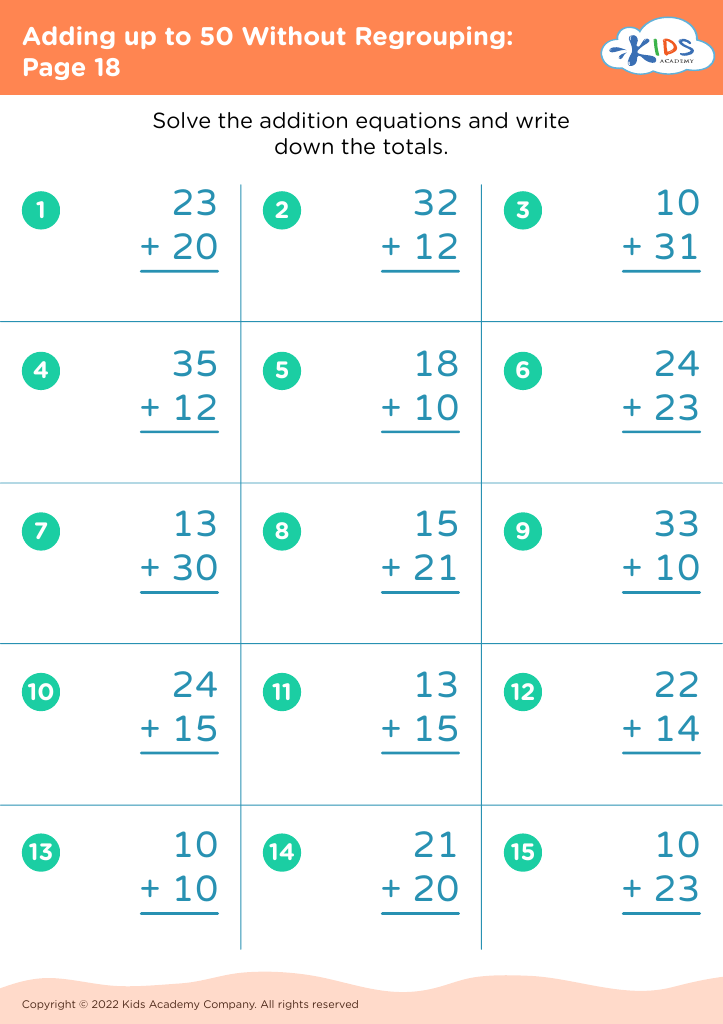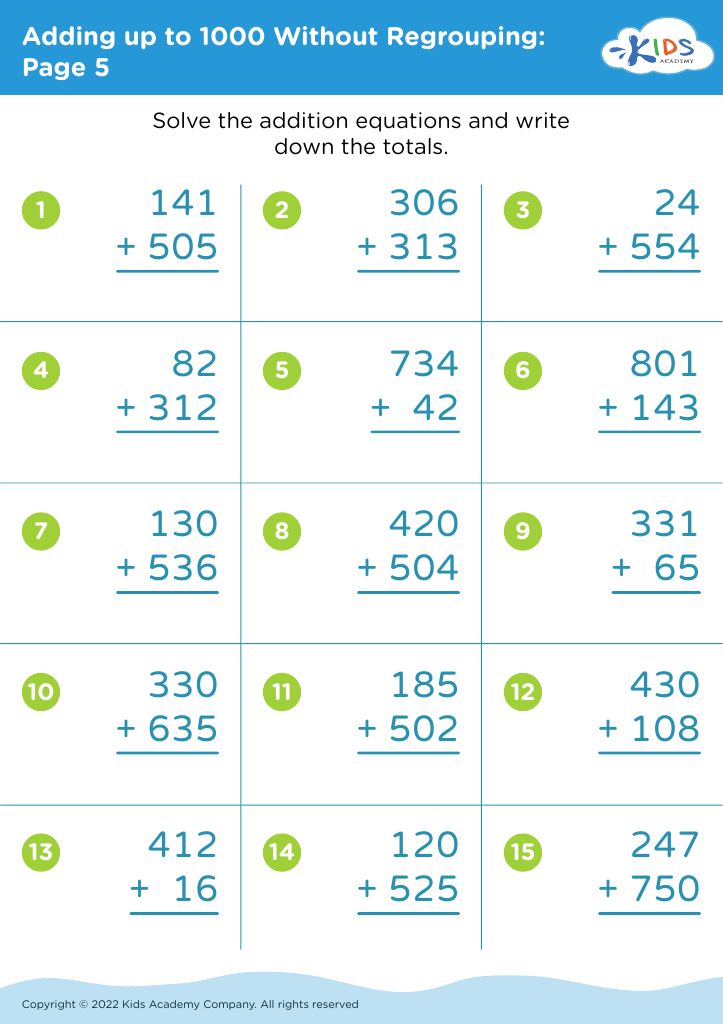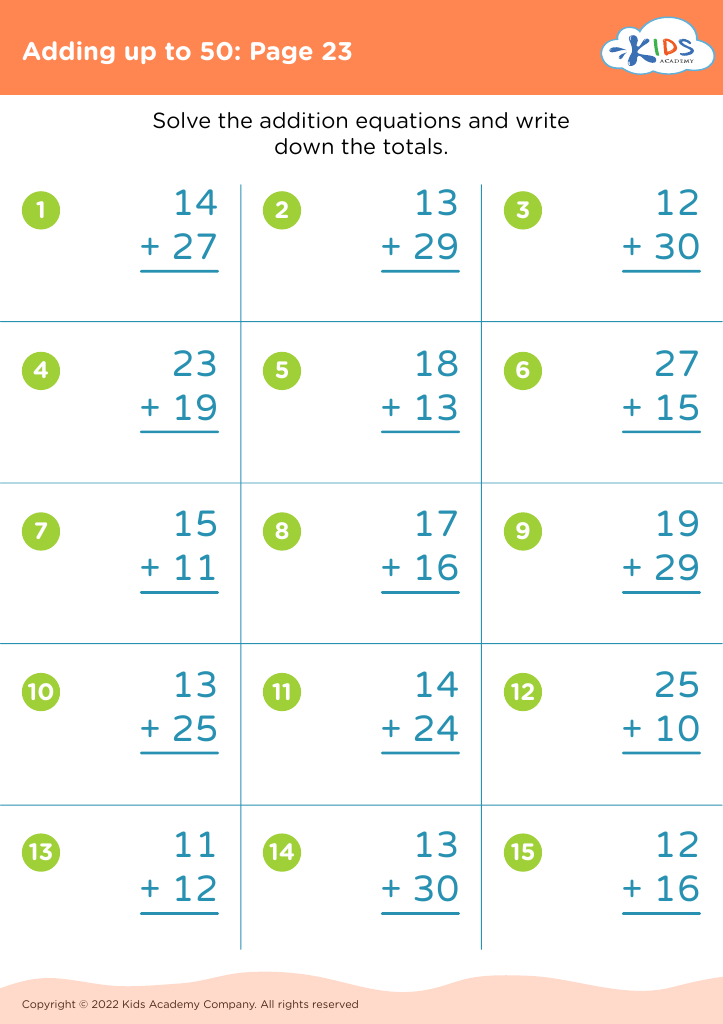Visual representation comprehension Math Worksheets for Ages 4-8
8 filtered results
-
From - To
Enhance your child's mathematical skills with our "Visual Representation Comprehension Math Worksheets" designed specifically for ages 4-8. These engaging resources help young learners grasp essential math concepts through visual aids, fostering a deeper understanding of numbers, counting, and problem-solving. Our worksheets incorporate colorful illustrations and interactive exercises to make learning fun and impactful. Perfect for homeschoolers and classroom settings alike, these materials encourage critical thinking and strengthen comprehension abilities. Help your child build a strong math foundation while developing essential skills in visual interpretation. Explore our collection today and set the stage for successful future learning!
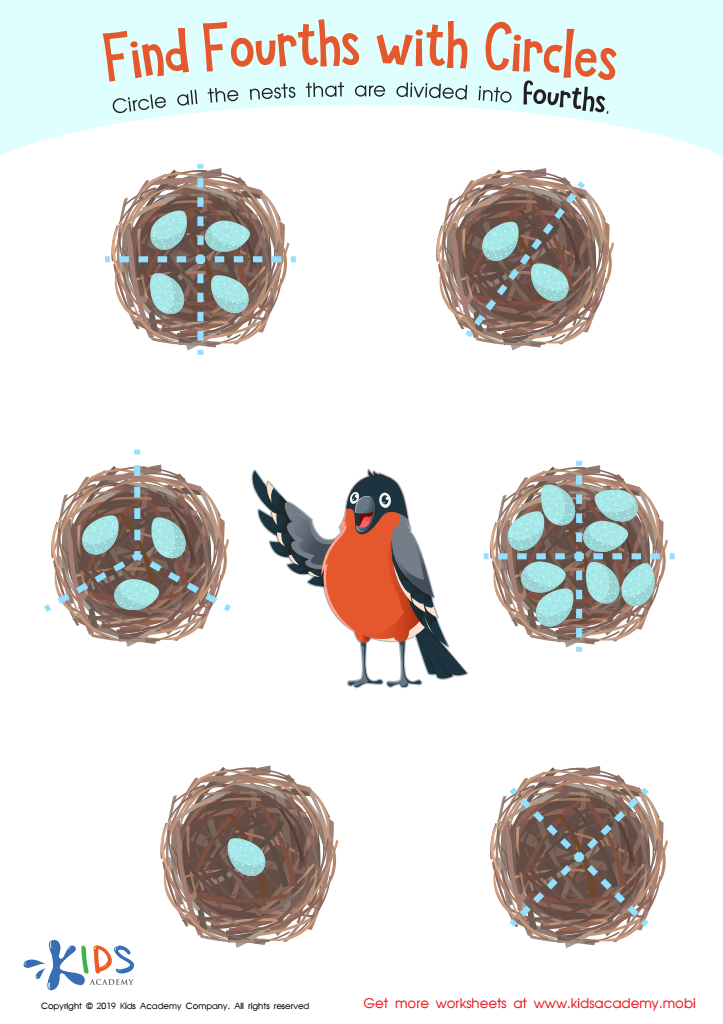

Find Fourths Circles Worksheet
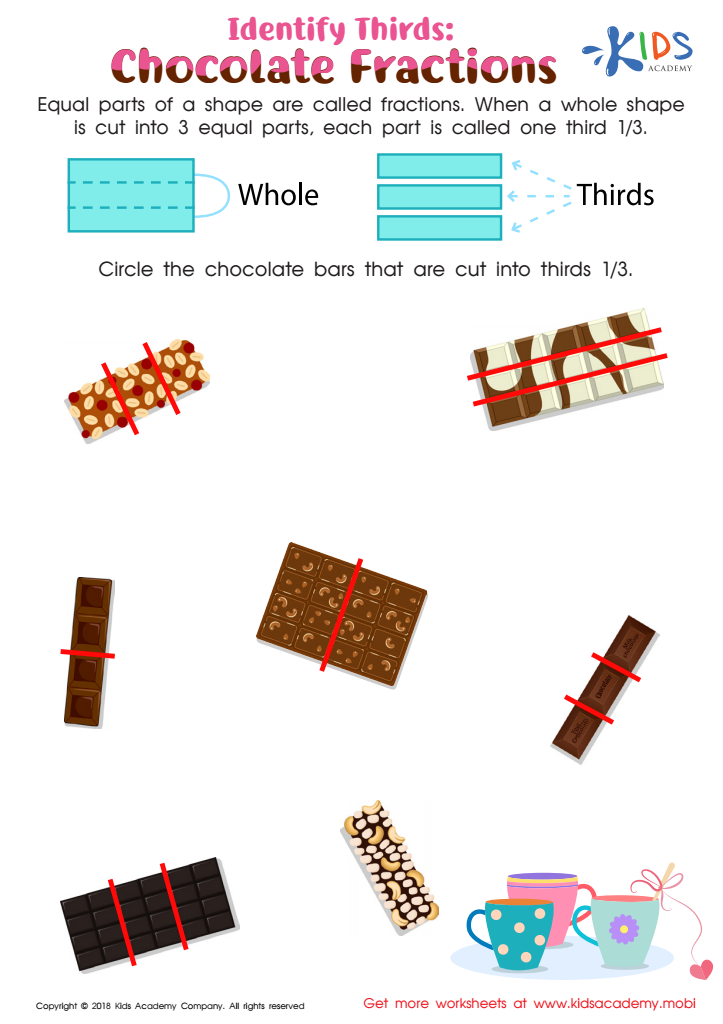

Identify Thirds: Chocolate Fractions Worksheet
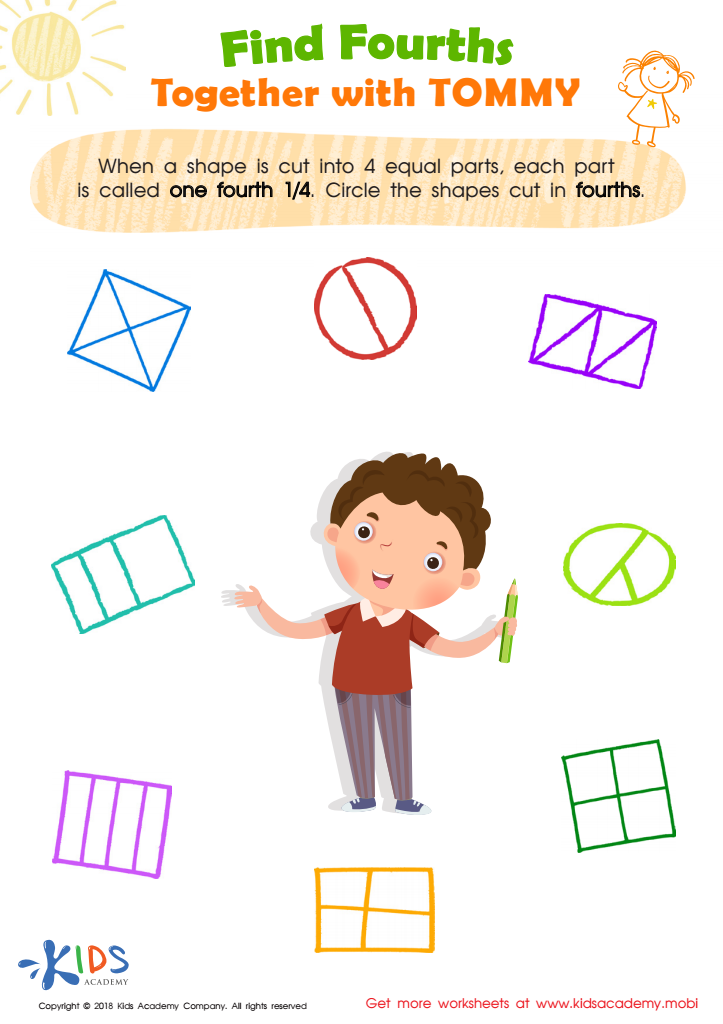

Find Fourths Together with Tommy Worksheet
Visual representation comprehension in math is crucial for children aged 4-8, as it lays the foundational skills needed for future mathematical understanding. At this age, children are developing their cognitive abilities, and visual aids, such as pictures, diagrams, and manipulatives, can significantly enhance their learning. These tools not only help children grasp abstract concepts but also make math more engaging and approachable.
For parents and teachers, fostering visual comprehension is essential for creating a positive learning environment. When children can visualize mathematical problems, they build confidence and reduce anxiety associated with math tasks. This comprehension directly supports problem-solving skills, as children can translate visual information into mathematical operations and vice versa.
Moreover, early exposure to visual representations can improve retention and recall of mathematical concepts, preparing children for more complex topics as they progress in their education. Ultimately, understanding how to represent and interpret mathematical ideas visually equips young learners with the skills they need for academic success, promoting a lifelong interest in math while developing critical thinking and analytical skills that extend beyond the classroom. This emphasis on visual learning will benefit them not just academically but also in everyday decision-making situations.
 Assign to My Students
Assign to My Students

